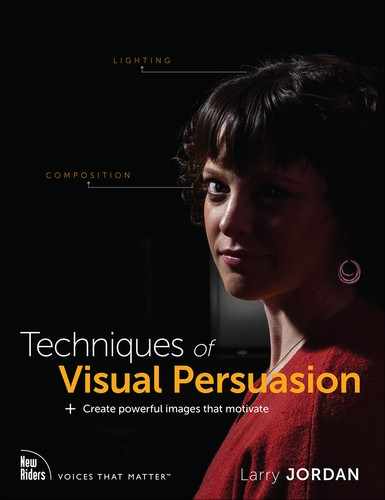Bibliography
Chapter 1
Adams, Z. (2017). The Role of Thought Confidence in Persuasion. https://thedecisionlab.com/role-thought-confidence-persuasion/.
Ascher, S., & Pincus, E. (2019). The Filmmaker’s Handbook (Fifth Edition). TheDecisionLab.com.
Booher, D. (2015). What More Can I Say. Prentice Hall Press.
Carnegie, D. (1961). How to Win Friends and Influence People. Simon & Schuster.
Charles, J. (2016). 27 Inspiring Quotes about Persuasion and Influence. http://www.artisanowlmedia.com/27-quotes-about-persuasion-and-influence/.
Eikenberry, K. (2014). Five Thoughts on Persuasion. https://blog.kevineikenberry.com/leadership-supervisory-skills/five-thoughts-on-persuasion/.
Gotter, A. (2019). 50 Call To Action Examples (and How to Write the Perfect One). https://adespresso.com/blog/call-to-action-examples/.
Nazar, J. (2013). The 21 Principles of Persuasion. https://www.forbes.com/sites/jasonnazar/2013/03/26/the-21-principles-of-persuasion/.
Norman, D. A. (2004). Emotional Design. Basic Books.
Overstreet, H. A. (1925). Influencing Human Behavior. W.W. Norton.
Chapter 2
Bang, M. (2016). Picture This: How Pictures Work. Chronicle Books.
Flowers, M. (2018). Does Sex Still Sell in the Age of Digital Marketing? https://www.ethoscopywriting.com/blog/does-sex-still-sell-in-the-age-of-digital-marketing.
Harrison, K. (2017). What is Visual Literacy? Visual Literacy Today. Retrieved Dec 28, 2019, from https://visualliteracytoday.org/what-is-visual-literacy/.
Lull, R. B., Bushman, Brad J. (2015). Do Sex and Violence Sell? A Meta-Analytic Review of the Effects of Sexual and Violent Media and Ad Content on Memory, Attitudes, and Buying Intentions. Psychological Bulletin, 141(5).
Kay, Magda. Sex and marketing: how to use sex in your advertising, Psychology Today. http://psychologyformarketers.com/sex-and-marketing/
Marczyk, Jesse Ph.D., Understanding Sex in Advertising: Getting people to look or buy?, Psychology Today, Jun 26, 2017. https://www.psychologytoday.com/us/blog/pop-psych/201706/understanding-sex-in-advertising
Chapter 3
Booher, D. (2015). What More Can I Say. Prentice Hall Press.
Bridges, L., & Rickenbacker, W. F. (1992). The Art of Persuasion. National Review.
Clark, R. P. (2013). How to Write Short: Word Craft for Fast Times. Little, Brown and Company.
Dean, J., PhD. (2010). The Battle Between Thoughts and Emotions in Persuasion. https://www.spring.org.uk/2010/11/the-battle-between-thoughts-and-emotions-in-persuasion.php.
Embree, M. (2010). The Author’s Toolkit. Skyhorse Publishing Inc.
Hausman, C., & Agency, D. L. (2017). Present Like a Pro: The Modern Guide to Getting Your Point Across in Meetings, Speeches, and the Media. Praeger Publishers Inc.
Khan-Panni, P. (2012). The Financial Times Essential Guide to Making Business Presentations. Financial Times/Prentice Hall.
Kilpatrick, J. J. (1984). The Writer’s Art. Andrews, McMeel
Lewis, E. S. E. (1903). Catch-Line and Argument. Quoted in “What is the mysterious ‘Rule of Three’? https://rule-of-three.co.uk/what-is-the-rule-of-three-copywriting/.
Newton, Isaac. (1704). Opticks: Or, A Treatise of the Reflections, Refractions, Inflexions and Colours of Light. Also Two Treatises of the Species and Magnitude of Curvilinear Figures, (Fig .12), Smith and Walford
Orwell, G. (1946). Politics and the English Language. Horizon, 13 (Issue 76).
Rapp, Christof. (2010). Aristotle’s Rhetoric, The Stanford Encyclopedia of Philosophy, https://plato.stanford.edu/entries/aristotle-rhetoric/#4.1
Sjodin, T. L. (2011). Small Message, Big Impact. Greenleaf Book Group.
Various (1977). Reader’s Digest Write Better, Speak Better. Reader’s Digest Association.
Weaver, K., Garcia, S. M., & Schwartz, N. (2012). The Presenter’s Paradox. Journal of Consumer Research.
Chapter 4
Bringhurst, R. (2013). The Elements of Typographic Style. Hartley & Marks Publishers.
Garfield, S. (2011). Just My Type: A Book About Fonts. Gotham.
Loxley, S. (2004). Type. I. B. Tauris.
Selander, Kelsey. (1989) Bitstream Typeface Library marketing booklet.
Chapter 5
Budelmann, K., Kim, Y., & Wozniak, C. (2010). Brand Identity Essentials. Rockport Publishers.
Hurkman, A. V. (2011). Color Correction Handbook. Peachpit Press.
Lindstrom, M. (2008). Buyology. Broadway Business.
Norman, D. A. (2004). Emotional Design. Basic Books.
Pastoureau, M. (2001). Blue: The History of a Color. Princeton.
THESE BOOKS FURTHER EXPLAIN JEAN DETHEUX’ IDEAS
Husserl, E. (1970). The Crisis of European Sciences and Transcendental Phenomenology. Northwestern University Press.
Merleau-Ponty, M. (2013). Phenomenology of Perception. Routledge.
Merleau-Ponty, M. (1964). The Primacy of Perception: And Other Essays on Phenomenological Psychology, the Philosophy of Art, History and Politics. Northwestern University Press.
Merleau-Ponty, M. (1992) Studies in Phenomenology and Existential Philosophy. Northwestern University Press. Particularly Cézanne’s essay on “Doubt.”
Hall, E. T. (1990). The Hidden Dimension. Anchor.
Chapter 6
Collins, J. (1998). Self-development for Success: Perfect Presentations. American Management Association.
Hausman, C., & Agency, D. L. (2017). Present Like a Pro: The Modern Guide to Getting Your Point Across in Meetings, Speeches, and the Media. Praeger Publishers Inc.
Khan-Panni, P. (2012). The Financial Times Essential Guide to Making Business Presentations. Financial Times/Prentice Hall.
Tufte, E. (1983). The Visual Display of Quantitative Information. Graphics Press.
Chapter 7
Norman, D. A. (2004). Emotional Design. Basic Books.
Chapter 12
Martin, R. B. (1986). Stan Freberg: His Credits and Contributions to Advertising. Texas Tech University.
Rose, J. (1999). Producing Great Sound for Digital Video. CMP Media, Inc.
Chapter 14
Hollyn, N. (2008). The Lean Forward Moment. New Riders Pub.
Murch, W. (2001). In the Blink of an Eye. Silman-James Press.
